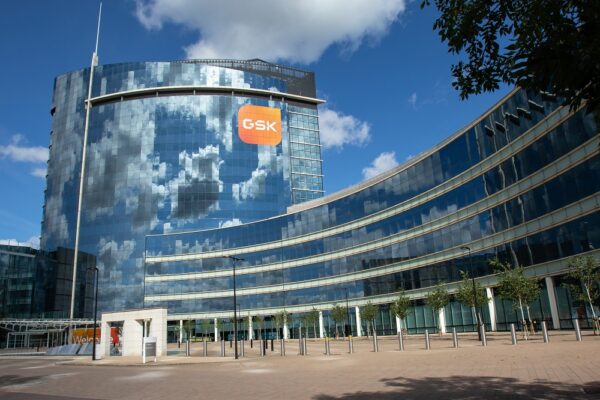
GSK finally has the long-awaited FDA approval it sought for blood cancer drug Blenrep. Three years after the pharmaceutical giant pulled the multiple myeloma therapy from the market, the FDA approved the drug again. But the new Blenrep regulatory nod announced Thursday comes in a more limited way than GSK wanted and the drug is rejoining a market that has grown and changed since it left.
Multiple myeloma is a blood cancer that develops in plasma cells, a type of white blood cell. Blenrep is an antibody drug conjugate (ADC) designed to target BCMA, a protein abundant on the surface of these cancerous cells. The FDA awarded Blenrep accelerated approval in 2020 as a fifth-line monotherapy for multiple myeloma. Two years later, Blenrep failed its confirmatory Phase 3 test. GSK withdrew the product from all markets globally, but continued clinical tests of the drug.
The new FDA submission for Blenrep was based on two new pivotal studies, one in combination with the Takeda Pharmaceutical multiple myeloma drug Velcade, and another one in combination with the Bristol Myers Squibb multiple myeloma drug Pomalyst. Both regimens were dosed with the dexamethasone, a corticosteroid. These Phase 3 studies, which evaluated the drug combinations as second-line or later treatments, achieved statistically significant and clinically meaningful results on the measure of progression-free survival.

Solera Health’s Playbook To Beat Rising Employer Expenses
Solera Health is working to streamline employer contracting with health tech.
Blenrep’s new FDA approval only covers use of the drug in combination with the Takeda drug and as a third-line or later treatment. That’s more limited than the new European Union approval announced in July, which permits use of Blenrep in combination with both the Takeda and BMS drugs as a second-line or later treatment. The FDA said its decision is based on data from the 217 patients who received the Blenrep drug combo as a third-line treatment. In this population, median progression-free survival was 31.3 months in the Blenrep arm and 10.4 months in the comparator group. Median overall survival was not reached in the study drug group and was 35.7 months in the comparator arm. In this pivotal study, eye toxicity was reported in 92% of patients, including cases classified as Grade 3 or 4 in severity; 83% of patients required dose modification to manage this complication.
Ocular toxicity is a known side effect of ADCs broadly. Blurred vision and vision loss were highlighted in a black box warning on Blenrep’s original label. This past May, the eye safety risks led members of an FDA advisory committee to vote against the drug’s benefit/risk profile in the proposed drug combinations as a second-line multiple myeloma treatment. Another factor that may have contributed to the negative vote was the low percentage of U.S. patients in the studies.
The FDA approval for Blenrep requires a Risk Evaluation and Mitigation Strategy (REMS), a plan for monitoring and managing the eye complication risks. In a Thursday evening conference call with journalists, GSK Chief Scientific Officer Tony Wood said Blenrep’s new REMS includes optometrists and ophthalmologists. This REMS will is simpler than the previous one and will also digitized, permitting clinicians to input data on a mobile device to reduce the administrative burden.
Multiple myeloma is the third most common blood cancer, behind lymphoma and leukemia. Wood said the market for multiple myeloma therapies is projected to reach $45 billion by 2032. Relapse is common in this type of cancer but retreatment with the same drug regimen typically does not work as well, which means patients need different options.

Integrating GLP-1s: How Berry Street is Redefining Nutrition Care
Richard Fu details the company's approach to nutrition therapy and strategy for patients using GLP-1s.
While Blrenrep’s initial approval made it the first BCMA-targeting therapy for multiple myeloma, that segment of the market has grown. The BCMA-targeting CAR T-cell therapies Abecma, from BMS, and Carvykti, from partners Johnson & Johnson and Legend Biotech, were both approved as fifth-line treatments. Carvykti has since moved up to second-line treatment while Abecma may now be used in the third-line setting. The 2023 FDA approval of Tecvayli, a bispecific antibody developed by J&J, brought patients a new BCMA-targeting therapy for patients requiring a fifth line of therapy.
The BCMA-targeting cell therapies from BMS and J&J require patients to be hospitalized before and after treatment. Blenrep, administered as a 30-minute infusion every three weeks, can be administered in community hospitals. That’s important because the community setting is where more than 70% of U.S. patients are treated, Wood said.
In the run up to the FDA regulatory decision, GSK said Blenrep’s return to the market could lead to £3 billion (about $3.8 billion) in peak sales. Those projections were based on U.S. approval of the drug for second-line use. Wood said clinical testing is ongoing to support expansion of Blenrep’s use, including as an earlier line of therapy. These studies have appropriate representation of U.S. patients, he said.
“Working closely with the FDA, our clinical development and evidence generation plans continue to explore the use of Blenrep in earlier and all stages of multiple myeloma globally, with additional data expected in 2028,” Wood said.
Photo by GSK






